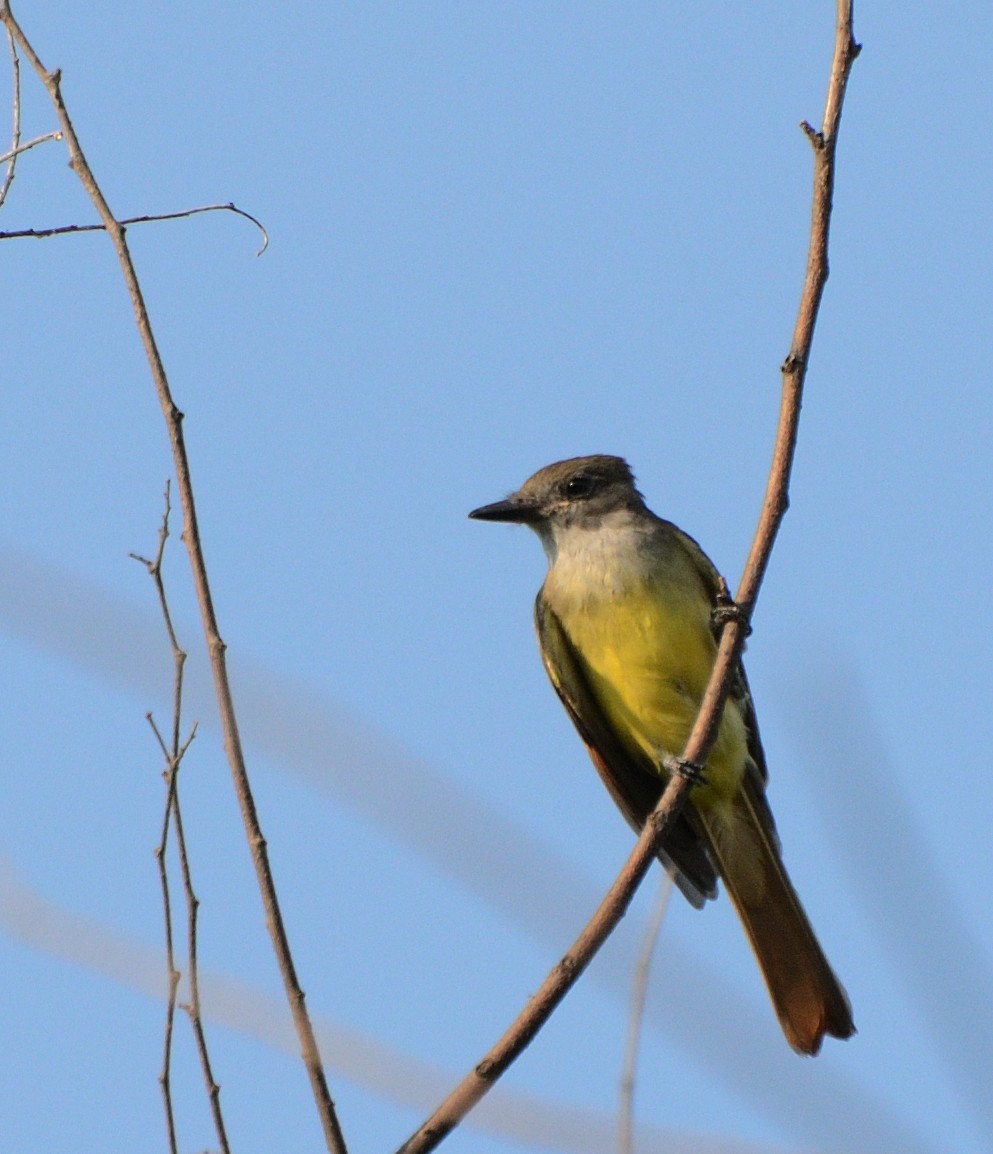Great Crested Flycatcher
A species of New World Crested Flycatchers, Also known as Snakeskin Bird Scientific name : Myiarchus crinitus Genus : New World Crested Flycatchers
Great Crested Flycatcher, A species of New World Crested Flycatchers
Also known as:
Snakeskin Bird
Botanical name: Myiarchus crinitus
Genus: New World Crested Flycatchers
Content
Description People often ask General Info
Description
Myiarchus crinitus is a large insect-eating bird, found in North America with a slightly domed or crested at the top of its head, so called great Crested Flycatcher. The bird sings what is called the dawn song and are socially monogamous. They can hunt with different tactics, but mostly adopt the sit-and-wait strategy in deciduous forests and suburban areas.
Size
13 - 23 cm
Life Expectancy
13 years
Nest Placement
Cavity
Clutch Size
4 - 8 eggs
Number of Broods
13 - 15 days
Nestling Period
13 - 15 days
Feeding Habits
Great Crested Flycatcher primarily consume insects such as butterflies, moths, beetles, grasshoppers, crickets, bees, wasps, and a lesser degree of flies and spiders. Their diet also includes small fruits and berries, with pits regurgitated after ingestion. They employ varied hunting tactics, like 'sit-and-wait' in high canopies, aerial pursuit, and gleaning prey from foliage.
Habitat
Great Crested Flycatcher's preferred habitats include open deciduous forests and mixed woodlands, notably in areas with an open canopy. They favor second-growth and some managed forests over dense, coniferous landscapes. These birds are largely adaptable, inhabiting everything from edge habitats by waterways to human-altered environments such as parks. Geographically, they breed across eastern to central North America and winter in Central America.
Nest Behavior
The male great Crested Flycatcher accompanies the female while she builds their nest. Nest construction may continue throughout incubation, with egg-laying occurring in the finely constructed inner cup. Parental care involves both sexes, though the female predominantly incubates the eggs.
Nest Characteristics
Great Crested Flycatcher nests in tree cavities, such as natural holes, abandoned woodpecker hollows, or even man-made structures, at heights between 2 to 70 feet. The nests are backfilled with various materials like leaves, twigs, hair, and uniquely, snakeskin, forming an inner cup around 3-3.5 inches wide and 1.5-2 inches deep.
Dite type
Insectivorous
People often ask
General Info
Feeding Habits
Bird food type
Bird Feeder Type

Platform
Sounds
Call
Recording location: Costa Rica
Song
Recording location: United States
Behavior
Great Crested Flycatcher exhibit dynamic daily activities, predominantly hunting from lofty perches with keen vision and quick, agile maneuvers to capture flying insects in mid-air. They are also known for their acrobatic skills, sometimes crashing through foliage to snap up prey. Their mating rituals involve males impressively swooping down to females and demonstrating persistence with hovering displays. Defending territory and their mates is a serious affair for great Crested Flycatcher, as they engage in a variety of threat displays and even physical confrontations to deter intruders. Despite their preference for edge habitats, great Crested Flycatcher remain resilient to brood parasitism from species like the Brown-headed Cowbird, likely due to their aggressive nature and cavity nesting habits.
Distribution Area
The Great Crested flycatcher habitat selection may vary slightly with different populations, but can be most often found breeding in deciduous forests and at edges of clearings and mixed woodlands. They also show a tendency to favour landscapes with open canopy, such as second growth forests or woodlands that have been subjected to selective cutting, and also appears to avoid coniferous dominant habitats such as the Canadian boreal forest. The summer breeding ground covers all eastern, mid-eastern and parts of central United States, including Northern and Southern parts of Florida, parts of Texas, central Oklahoma, and eastern and central North Dakota. In Canada, it is limited to southern Manitoba, extreme southern portions of the St-Lawrence forest of Ontario, Quebec, northeast Nova Scotia and parts of Prince Edward Island. Its winter range includes most of southern Mexico and the Yucatán Peninsula, and extends along the costs of Central America. In southern peninsular Florida, Great Crested flycatcher can be found year-round. 
Scientific Classification
Phylum
Chordates Class
Birds Order
Perching birds Family
Tyrant flycatchers Species
Great Crested Flycatcher 